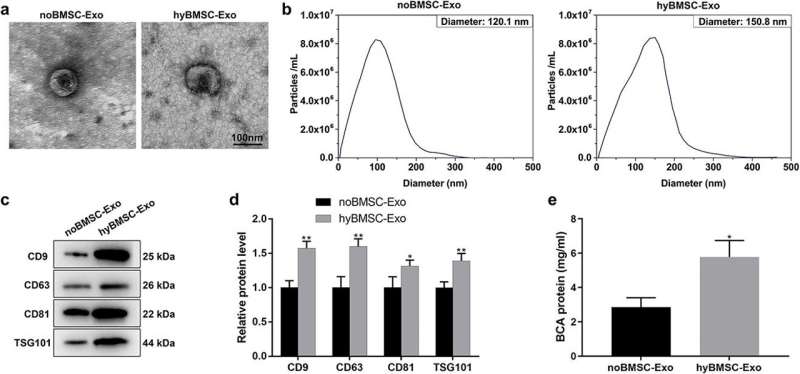This article has been reviewed according to Science X's editorial process and policies. Editors have highlighted the following attributes while ensuring the content's credibility:
fact-checked
proofread
Researchers pioneer novel stem cell therapy for diabetic wound healing

Researchers unveiled a novel therapy for diabetic wound healing. This research highlights the use of exosomal miR-4645-5p from hypoxic bone marrow mesenchymal stem cells (BMSCs) to significantly enhance wound healing by promoting keratinocyte autophagy.
Diabetic wounds, often challenging to treat and prone to complications, can severely impact patients' quality of life. Traditional treatments have struggled with issues like low survival rates of transplanted cells and the potential for immune rejection. This research introduces a groundbreaking approach using stem cells' regenerative capabilities.
In a study published in Burns & Trauma, researchers have pioneered a novel approach to heal diabetic wounds faster and more effectively than ever before.
Their research centers on the use of special particles called exosomes, which are derived from stem cells grown under low oxygen conditions, known as hypoxic conditions. These exosomes contain a potent molecule, miR-4645-5p, that significantly boosts the healing process.
This study delves into the use of exosomes from hypoxic bone marrow mesenchymal stem cells (BMSCs) as a novel treatment for diabetic wounds, which are notoriously difficult to heal and prone to infections. Focusing on the microRNA miR-4645-5p found within these exosomes, the research uncovers its critical role in enhancing wound healing by targeting the MAPKAPK2 pathway, thereby regulating the AKT-mTORC1 signaling cascade.
This inhibition boosts autophagy in keratinocytes—key players in wound repair—by promoting cell health, proliferation, and migration. Demonstrating that exosomes enriched with miR-4645-5p from hypoxic BMSCs can significantly speed up the healing of diabetic wounds, the study paves the way for new regenerative medicine strategies that manipulate cellular environments to enhance autophagy, offering a promising avenue to improve outcomes in diabetic wound care.
Dr. Yan Shi, the lead researcher, states, "Our findings offer a new horizon in diabetic wound care. By harnessing the power of stem cell-derived exosomes, particularly under hypoxic conditions, we've seen a remarkable improvement in wound healing processes, opening doors to potentially life-saving treatments."
This research not only sheds light on the mechanisms behind stem cell-mediated wound healing but also opens up new avenues for developing treatments for diabetic wounds and possibly other conditions. The ability to harness and modulate the healing properties of stem cells through their exosomes could lead to more effective, targeted therapies, reducing the burden of diabetic wounds on patients worldwide.
More information: Yan Shi et al, Exosomal miR-4645-5p from hypoxic bone marrow mesenchymal stem cells facilitates diabetic wound healing by restoring keratinocyte autophagy, Burns & Trauma (2024). DOI: 10.1093/burnst/tkad058



















